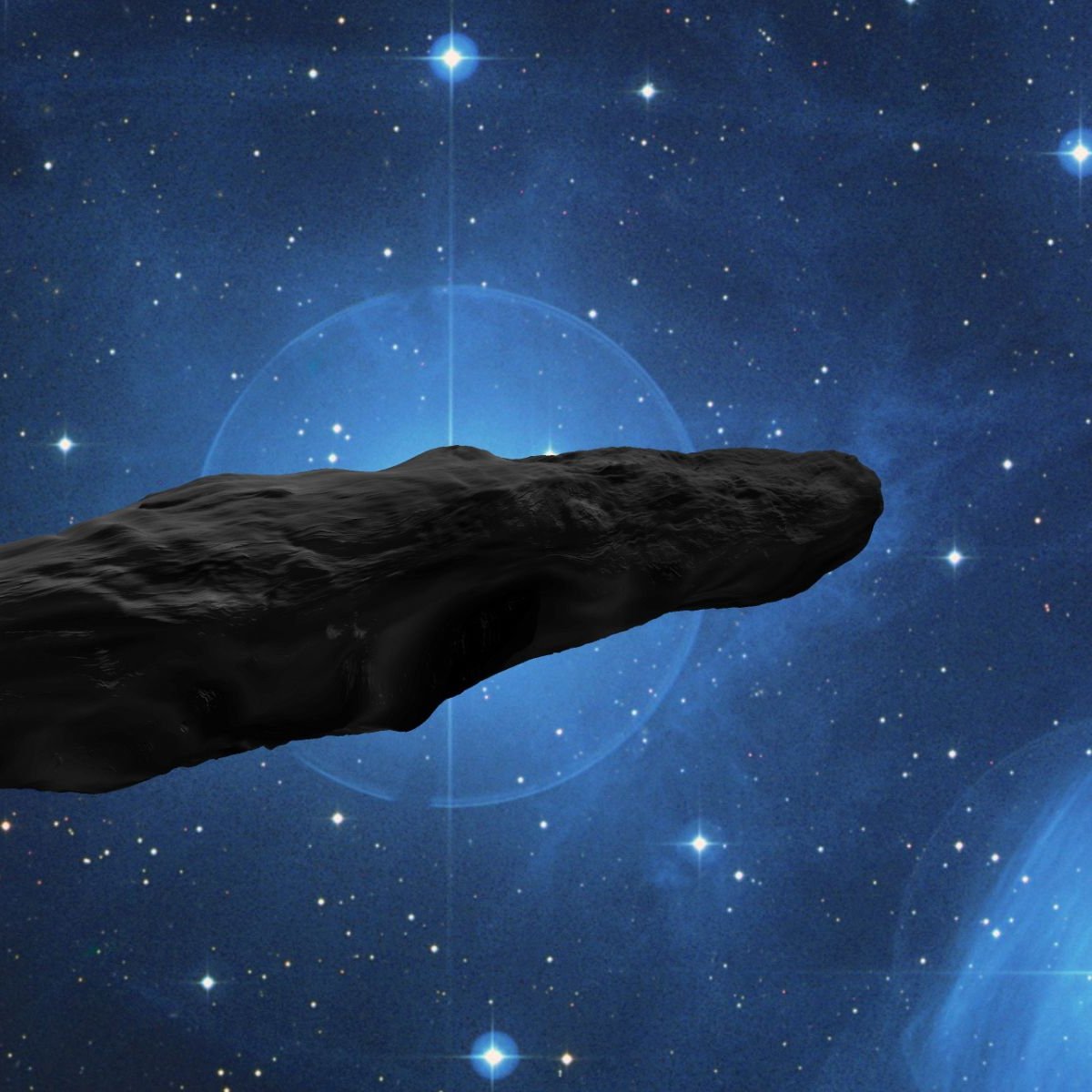Astronomers detected it in 2017 A space object called 1I/?Oumuamua from another Solar System, passing through the Milky Way and leaving signs of its presence. Although many scientists believe this is a cosmic rock heading towards us, others claim it could be a spacecraft or alien debris; The second theory is less accepted, but it was a theoretical physicist who proposed the hypothesis.
The object was the first of its kind to be observed passing through our Solar System, and is now almost seven years after it was detected. Scientists have yet to understand what its true nature is..
Since it has already left our observation area, researchers can no longer see its features. In reality, At the time of detection, researchers could not make an accurate observation because the object was moving away from the Solar System.
The United States National Aeronautics and Space Administration (NASA) suggests that the object may be an asteroid or comet originating from another star system; It may have traveled over millions of years. Fortunately, before it moved away from us, scientists were able to use telescopes around the world, such as the Very Large Telescope in Chile, to collect some data about ‘Oumuamua.
“The asteroid, named ‘Oumuamua by its discoverers, is extremely elongated, up to 400 meters long, perhaps 10 times as long as it is wide. This aspect ratio is larger than any asteroid or comet observed in our Solar System to date. Its elongated shape is quite surprising.” “And unlike the asteroids seen in our Solar System, it may provide new clues about how other solar systems formed,” explains NASA.
We gathered information from astronomers and other experts in the field to try to understand a little more about what ‘Oumuamua is and how it offers a window of wisdom about cosmic objects from other solar systems.
What is Oumuamua?
During the discovery, physicist Avi Loeb from Harvard University (USA) He suggested that the object might be some type of spacecraft, probe, or debris from an alien civilization. If it were trash, it might have come close to our system by chance, but Loeb said a probe might have been sent on purpose to examine the area.
In an article published in the scientific journal Astrophysical Journal Letters, Loeb wrote: The way the interstellar object accelerates does not ‘match’ the characteristics of an asteroid or comet. The extraterrestrial hypothesis may make more sense to the scientist.
“Showing that an object the size of ‘Oumuamua could be sent to another star system by aliens with nothing more than a solar sail is certainly ingenious. But one should not blindly accept this clever hypothesis when there is also a plausible explanation (SETI Institute senior astronomer Seth Shostak, NBC “For ‘Oumuamua, and most likely a priori – that is, a comet or asteroid seen from a distance,” he said in an email to the News.
In another article published in 2023, two scientists presented: This is a more natural explanation for ‘Oumuamua’s strange properties, including its unique acceleration pattern. They explain that ‘Oumuamua has traveled through interstellar space for millions of years, storing large amounts of molecular hydrogen; This element may have turned into gas in the presence of the Sun.
The researchers explain that the release of gas may be the reaction responsible for the acceleration of the object during its orbit in the Solar System; It is defined as an asteroid or comet. Many researchers believe this is one of the best explanations because it is speeding past Earth and has been so little observed; but most agree that more data still needs to be collected about the object.
Mysteries of interstellar objects like ‘Oumuamua
A team of astronomers claims that it is still possible to study ‘Oumuamua, but that it will be necessary to send a mission to observe the object in 2028; The end would come approximately 26 years later. The mission, called Project Lyra, created by the British organization Interstellar Research Initiative, proposes launching a space probe to collect data on interstellar rocks.
‘Oumuamua was the first interstellar object that researchers observed, and shortly after in 2019, they managed to observe 2I/Borisov, the second object of its kind. Therefore, the idea of Project Lyra is to send a mission to study both cosmic rocks.
Astronomers suspect two discoveries: It turns out that the frequency of sightings of interstellar objects in the Solar System is much higher than previously imagined. University of California, Los Angeles planetary scientist David Jewitt suggests that there may be around 10,000 interstellar objects similar in size to ‘Oumuamua orbiting Neptune alone.
The study of interstellar objects is crucial to helping scientists understand some important questions about the universe.. Ultimately learning more about cosmic rocks from other systems may help detail the formation process of objects in exoplanetary systems.
Did you like the content? Read more astronomical curiosities at TecMundo. If you wish, take the opportunity to understand the role of gravitational waves in the origin of life.
Source: Tec Mundo
I’m Blaine Morgan, an experienced journalist and writer with over 8 years of experience in the tech industry. My expertise lies in writing about technology news and trends, covering everything from cutting-edge gadgets to emerging software developments. I’ve written for several leading publications including Gadget Onus where I am an author.











